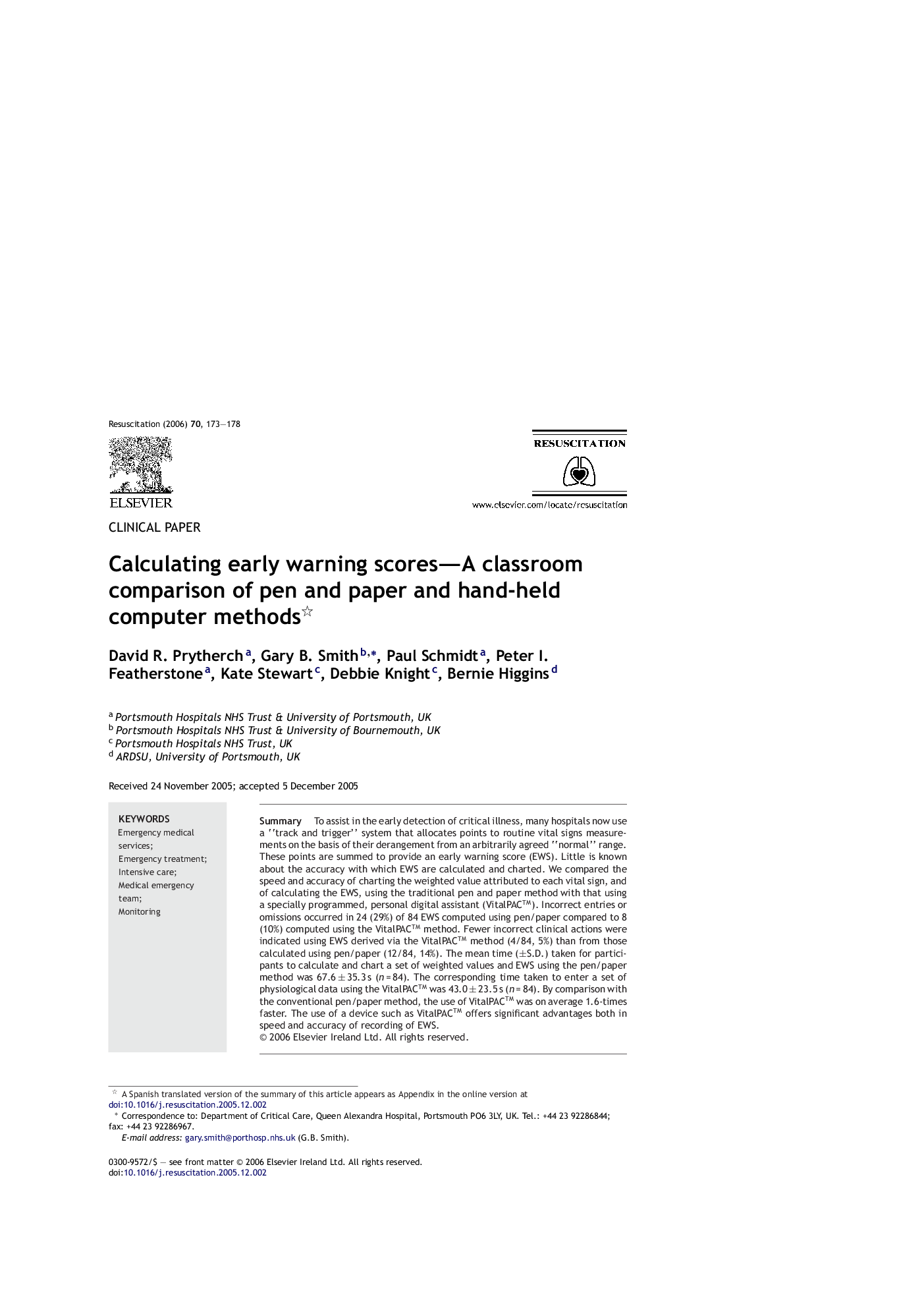| Article ID | Journal | Published Year | Pages | File Type |
|---|---|---|---|---|
| 3011461 | Resuscitation | 2006 | 6 Pages |
SummaryTo assist in the early detection of critical illness, many hospitals now use a “track and trigger” system that allocates points to routine vital signs measurements on the basis of their derangement from an arbitrarily agreed “normal” range. These points are summed to provide an early warning score (EWS). Little is known about the accuracy with which EWS are calculated and charted. We compared the speed and accuracy of charting the weighted value attributed to each vital sign, and of calculating the EWS, using the traditional pen and paper method with that using a specially programmed, personal digital assistant (VitalPAC™). Incorrect entries or omissions occurred in 24 (29%) of 84 EWS computed using pen/paper compared to 8 (10%) computed using the VitalPAC™ method. Fewer incorrect clinical actions were indicated using EWS derived via the VitalPAC™ method (4/84, 5%) than from those calculated using pen/paper (12/84, 14%). The mean time (±S.D.) taken for participants to calculate and chart a set of weighted values and EWS using the pen/paper method was 67.6 ± 35.3 s (n = 84). The corresponding time taken to enter a set of physiological data using the VitalPAC™ was 43.0 ± 23.5 s (n = 84). By comparison with the conventional pen/paper method, the use of VitalPAC™ was on average 1.6-times faster. The use of a device such as VitalPAC™ offers significant advantages both in speed and accuracy of recording of EWS.
